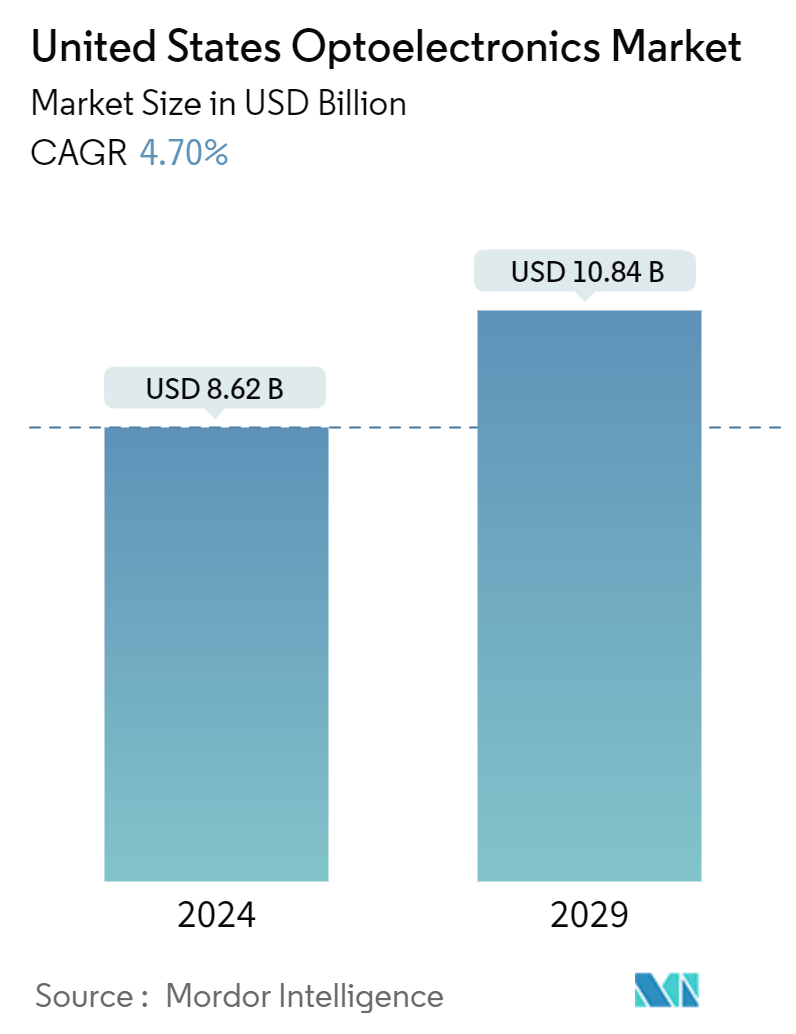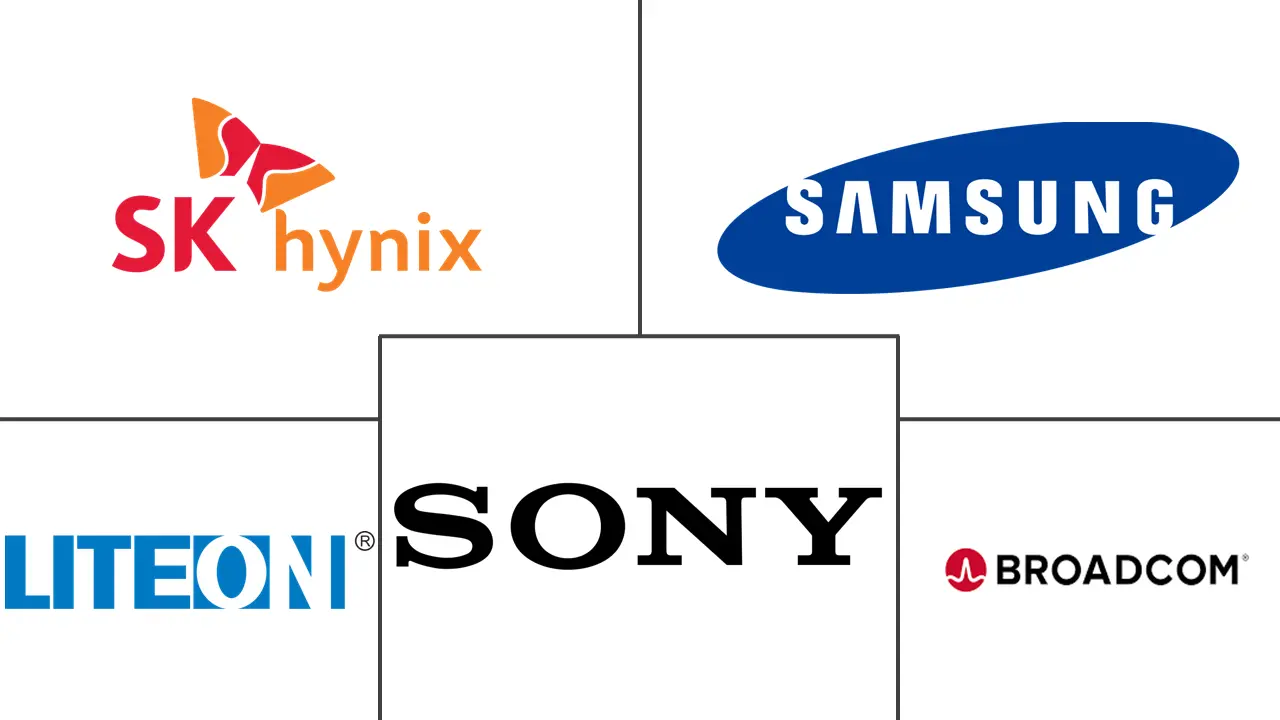Market Size of United States Optoelectronics Industry

| Study Period | 2018 - 2029 |
| Base Year For Estimation | 2023 |
| Market Size (2024) | USD 8.62 Billion |
| Market Size (2029) | USD 10.84 Billion |
| CAGR (2024 - 2029) | 4.70 % |
| Market Concentration | Low |
Major Players
*Disclaimer: Major Players sorted in no particular order |
United States Optoelectronics Market Analysis
The United States Optoelectronics Market size is estimated at USD 8.62 billion in 2024, and is expected to reach USD 10.84 billion by 2029, growing at a CAGR of 4.70% during the forecast period (2024-2029).
- Optoelectronics (or optronics) is a branch of electronics that focuses on the study and application of devices and systems that detect, control, and emit light. This field encompasses a variety of light forms, including visible light, infrared, ultraviolet, and even gamma rays and X-rays. Optoelectronic devices function as transducers, converting electrical signals into optical signals and vice versa. They are primarily based on the quantum mechanical effects of light interacting with electronic materials, particularly semiconductors.
- Optoelectronics provide electrical isolation, allowing two systems that operate at different voltages to interface. This helps in limiting data transmission issues caused by induced noise, crosstalk, and signal degradation due to worn runs. Optoelectronics provide a high bandwidth for communications, which is advantageous in various applications like telecommunications and data transmission. Optoelectronic devices consume less power, making them energy-efficient and suitable for applications where power consumption is a concern.
- Optoelectronics devices also prevent dangerous voltages from passing between electronic circuits, enhancing safety in various applications in files such as communications, energy conversion, and sensing. Moreover, optoelectronic devices can be physically separated by a distance and still pass data, making them suitable for applications where physical space is a constraint.
- The transition from traditional incandescent light sources to LEDs has revolutionized the lighting industry in the United States. LEDs are more energy-efficient, longer-lasting, and environmentally friendly, leading to substantial cost savings for consumers and businesses alike. The rising growth in the use of LED lamps in buildings for lighting also provides enormous possibilities for optoelectronics.
- As per the US Department of Energy, LED lights are expected to gain popularity drastically between 2020 and 2035 in the United States. By 2025, LED lights should be installed in 73% of residential lighting and become the most common light source in all sectors. This will create massive growth opportunities for the market to grow and improve throughout the forecast period, driving the market significantly.
- Further, according to the US Department of Energy, the residential sector will see the most LED light installations in the forecasted period, recording 3,800 million units in 2025 and 6,210 million units by 2035.
- The increasing popularity of wearable health technology, like heart rate monitors and blood glucose sensors, drives the demand for optoelectronic sensors in the United States. These devices utilize light-based technologies to monitor various health parameters in real-time.
- However, high manufacturing and fabrication costs, as well as challenges with energy loss and heating of optoelectronic devices, are likely to act as restraining factors in the growth of the studied market.
- Further, the increased inflation and interest rates reduced consumer spending and hampered the demand for semiconductors and electronics, leading to slow growth in the studied market. Further, the United States and China trade war disturbed the global semiconductor supply chain. Additionally, owing to strict export and import controls on semiconductor manufacturing equipment in China by the United States, the production of the consumer electronics sector is compromised.

